3D printing technology - 'angel' of unhappy lives
At the age of 13, the age at which children start learning how to grow up, learn how to express themselves with confidence, carefree of the pupil age, the young Christophe Debard must face an event perhaps is the biggest in my life, that is to cut off one leg to keep my life. Just a few years ago, Debard was still a normal kid, free to explore his own world, now he had to face the first grief, which most experienced people probably It also takes a long time to overcome. Christophe Debard was diagnosed with cancer at age 12 and the doctor said he was forced to remove the right leg from the knee joint down if he did not want to be life-threatening. The surgery was then successful, but also completely changed the life of Christophe Debard.
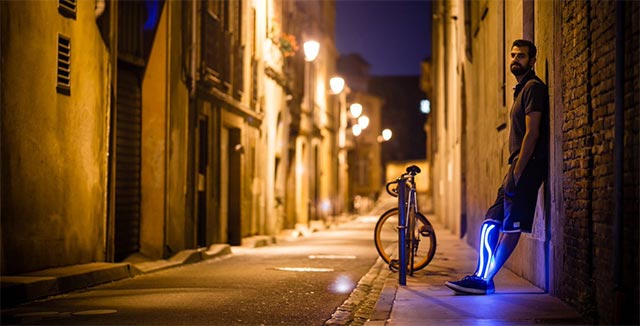
- 3D printing houses from mud, straw and rice husk materials are cheaper than the iPhone
Years later, Debard was fitted with an artificial leg and although it could fulfill his role in helping him move, there were still many inconveniences Debard faced with this fake leg. One of the first problems Debard faced was inferiority: 'When you were a teenager, in the age of having the most confidence and longing to express yourself, it was hard to accept the truth. that I cannot walk like a normal person. And worse yet, you will have to face prying eyes, gossip anywhere, comfort, encouragement, mockery and ridicule, and you must learn to get used to all that ', Christophe Debard shared.
Such a loss is so great, it can knock down many of us, making us live forever with inferiority complexes. However, Debard did not let that bad thing happen to him, not "drowning" in negative thoughts about himself. Instead of caring too much about how others see me, Debard learns how to deal with a defect in his body. He spent a lot of time thinking, looking for solutions for his feet, and gradually realized a technology could be a cure for him, that is 3D printing. Debard has discovered that 3D printing technology can create fake legs (and many other body parts) that are very similar with high sophistication, suitable for each person's condition, completely superior to With the rigid and scary fake legs he used before, the price is not too expensive.
- Invite to see NERA - the world's first 100% 3D electric motorcycle, 'fainting substance'
After a long time of accumulating experience and knowledge from many different channels, Debard boldly established a 3D printing startup named 'Print My Leg', with the aim of providing Granting open source blueprints to others who are interested and want to follow his path. These designs allow the creation of decorative fake pieces that can be customized according to each person's wishes, no different from the hobby tattoo or clothing selection according to their own personality.
'I created myself a new prosthetic leg, with a unique design and eye-catching decorative pattern, and using a Lumilor electroluminescent paint to make my legs glow in the dark. I started using this prosthesis every day and realized that the kids started to approach me with a warm curiosity, instead of being scared and uncomfortable as before when I still had fake legs. wood and steel look so dry and scary. Obviously, using these eye-catching fake legs will help narrow the gap, helping people with disabilities feel more confident. But making such a leg yourself is not simple and is quite expensive, which is why I started the Print My Leg project. Debard share.
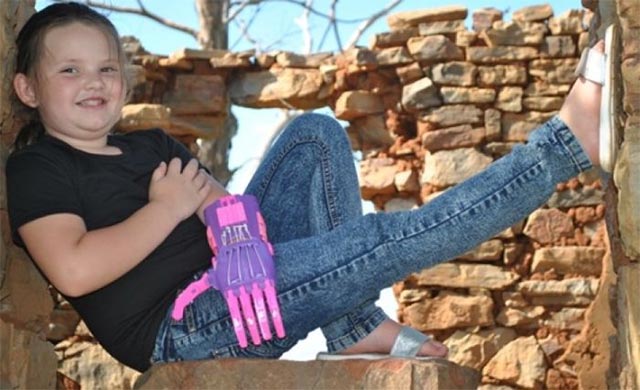
- The world's first steel bridge was created with 3D printing technology, equipped with smart sensors
'The mission Christophe Debard set for me is to change the way people look at a defect in other people's bodies. Through his project, he has created an opportunity to help those who are unfortunate to encounter body defects like themselves can create and express themselves through prosthetics, making them feel confident in using them and interacting with people around them, 'Lee Dockstader, director of Vertical Market Development at HP, commented on Christophe Debard's Print My Leg initiative.
Print My Leg is not the only project!
In My Leg is a great project, and even more amazing when it is not the only initiative in the world towards similar humanistic purposes.
3D printing technology has opened up new opportunities in creating more friendly prosthetic parts, and charities are willing to support the development of this new field. Many of these initiatives focused on children, the most difficult age when suddenly faced with body defects, like what Debard once experienced when he was 13 years old. The reason that 3D printing may be particularly useful at this age is because children are still in a rapid growth phase, which makes traditional prosthetics expensive but difficult to meet. reality. As in the case of Debard, when he entered puberty, he had to replace his prosthetic limbs with larger sizes each year. Meanwhile, 3D printing is much cheaper to help reduce the financial burden for people who have not been as lucky as others.
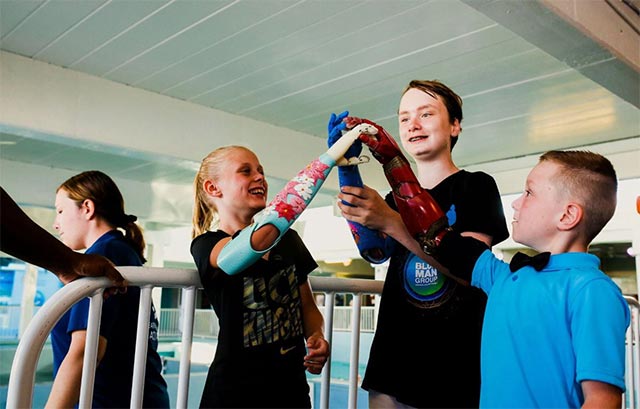
- 3D printed bus shelters were put into service first in the world
Anyone can create their own design
Another excellent example of a project to create a prosthetic leg through 3D printing technology focused especially on children is Cyborg Beast. Founded by an engineer named Jorge Zuniga and his research team at Creighton University in Omaha, Nebraska, USA, Cyborg Beast focuses primarily on developing and manufacturing artificial hands and feet for children. I, with the same philosophy regarding bright, eye-catching colors, draws attention like Christophe Debard's Print My Leg startup. Files containing Cyborg Beast's designs are available for download online under a Creative Commons license, meaning anyone can create fake hands and feet for themselves, in the style that they like. . To date, the designs of Cyborg Beast have been downloaded tens of thousands of times and are used by thousands of users worldwide.
Perhaps the world's largest project of fake body with 3D printing technology is Limbitless Solutions - a research team beyond the scale of Central Florida University, under the guidance of engineer Albert Manero. With a staff of mostly technical students, Limbitless Solutions's goal is to create general personal 3D printed biological parts and artificial arms specifically for children with birth defects in particular. . Limbitless Solutions's designs can also be provided free of charge to those who need it thanks to online donations.
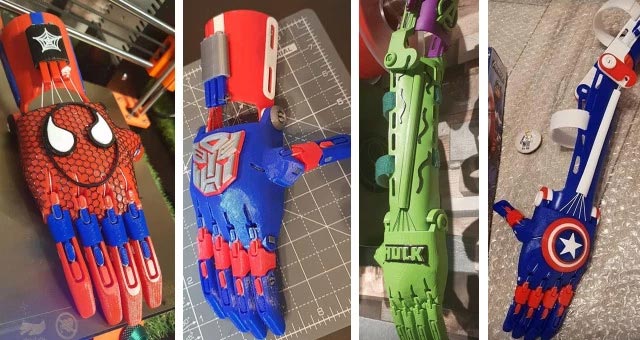
- New 3D printing techniques especially for stainless steel materials
Limbitless Solutions' humanitarian projects have also attracted the attention of many voiced individuals in the community, one of which is the famous actor Robert Downey Jr (who has made the design creative for a blockbuster inspired by Iron Man for a 7-year-old boy in 2015). Thanks to this, this non-profit organization was able to create a series of interesting prosthetics, inspired by many close areas of life, such as music, cinema, or games.
'We started the project with a very simple goal, which is to create a prosthetic arm that can only be opened and closed. However, due to popular demand and the growing interest of the community in improving the effectiveness of fake body parts, we began to work on creating real prosthetics. Show complicated operations like the fingers. Of course to do this, Limbitless Solutions' engineers have also faced a lot of technical difficulties, 'said Dominique Courbin, Limbitless Solutions product manager.
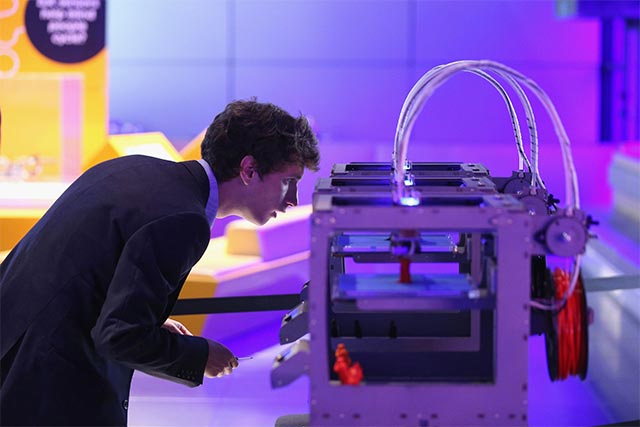
- Artificial 3D printed hearts work almost like human hearts
About the motivation for the project, Mr. Courbin added that it was the innocent smile of the kids when they were put on the fake arm designed with cartoon characters, the superheroes they loved helped him. and my research team goes through all the difficulties because they know that the work they are doing has really high thoughts!
3D printing opens up the potential for the fake body parts industry
In 2019, we are likely to be entering a golden age for the industry to make fake body parts through 3D printing. Breakthroughs in this technology open up the ability to print on more materials than ever before. No longer just plastic, we can now 3D print with any material you can imagine, including hard metals like titanium. In addition, 3D printer systems are increasingly being used more than ever, contributing to bringing open source projects such as Print My Leg closer to everyone. Finally, breakthroughs in sophisticated robotics research will help counterfeit parts become more flexible and useful, while new innovations in three-dimensional scanning will help measure and mount. Making these devices easier.
In addition, according to Mr. Lee Dockstader: 'Continuing to promote continuous improvement of 3D scanning applications and related software will also contribute to providing disabled people with delicate prosthetics. than'.
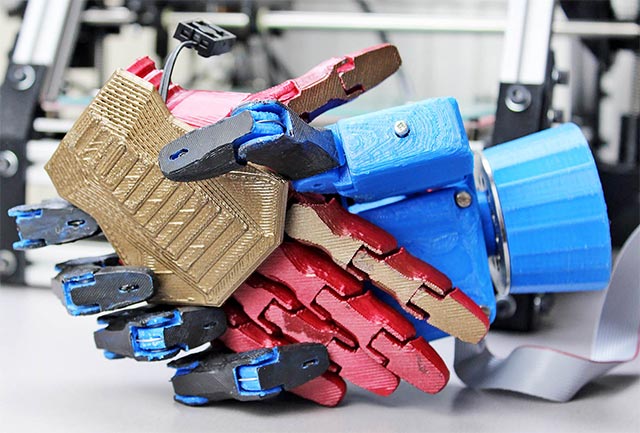
- Unbelievable story: Successful creation of stem cells made from stem cells through 3D printing equipment
About Barshe Debard, he realized that this was just the beginning of the journey that he would have to walk in the future:
'My goal is to make this fabrication and transformation process more accessible. I want to link more people around these humane projects so that they can create more friendly designs. For this reason, I am in the process of collaborating with e-NABLE, a global movement and volunteer network using 3D printers, design skills and importance is valuable effort and time. of myself to create free prosthetic hands and feet with 3D printing technology for those in need - especially people with disabilities, not too much money. '
What is the next stage of this noble mission? To further expand projects such as Print My Leg or Limbitless Solutions, and widely apply 3D printing technology in the manufacture of artificial body parts on a global scale, it will need the help of power. more of experts from related fields. Hopefully in the near future, all people with disabilities can have access to great achievements from 3D printing technology!
You should read it
- Explore inside money printing plants of countries around the world
- The new 3D printing technique can create delicate, small, soft objects in seconds
- Some tips for printing text in MS Word
- New 3D printing techniques especially for stainless steel materials
- Artificial 3D printed hearts work almost like human hearts
- 16 great practical applications of 3D printing technology when applied to life
 Quantum computing - a marathon, not a sprint contest!
Quantum computing - a marathon, not a sprint contest! The development flow of programming languages, new problems that are not new
The development flow of programming languages, new problems that are not new Stadia - Google's new gaming platform can 'stifle' the mobile game market?
Stadia - Google's new gaming platform can 'stifle' the mobile game market? CEO Mark Zuckerberg talks about Facebook's 'privacy' in the future
CEO Mark Zuckerberg talks about Facebook's 'privacy' in the future The most anticipated things at Google I / O 2019
The most anticipated things at Google I / O 2019 Kotlin - the fastest growing programming language in the world
Kotlin - the fastest growing programming language in the world